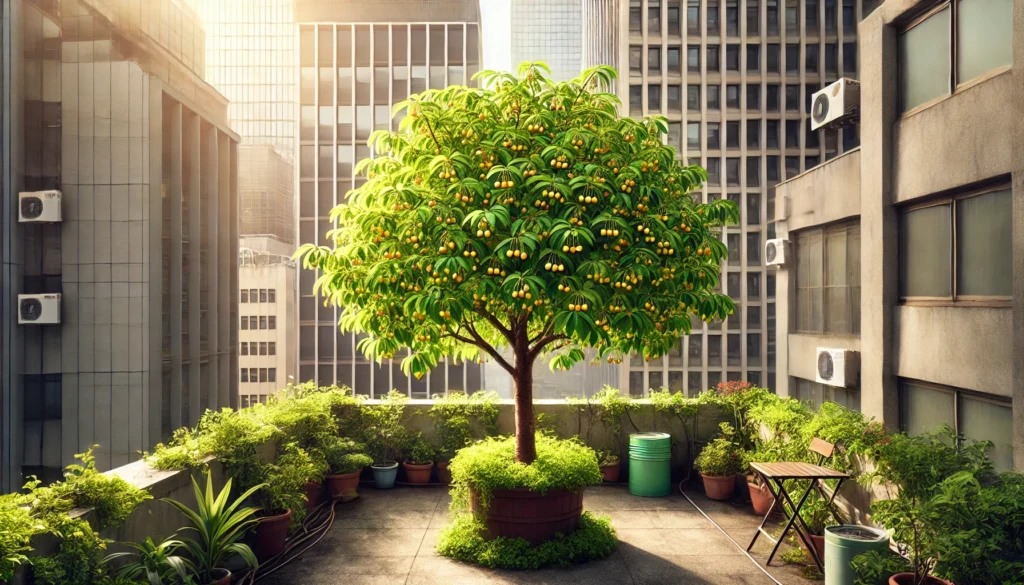
How to Grow Cherry Trees in Urban Environments Successfully: A Complete Guide
Growing cherry trees in urban environments can be a rewarding experience, but it requires careful planning and attention to detail. How to Grow Cherry Trees in Urban Environments Successfully is a question many city dwellers are asking as they look to add beauty and fresh produce to their urban landscapes. With limited space, unique challenges like pollution, and variable weather conditions, it’s important to understand how to create the ideal environment for your cherry tree to thrive. In this guide, we’ll walk you through essential tips and strategies to ensure your cherry trees not only survive but flourish in an urban setting, giving you the best chance for healthy growth and a fruitful harvest.
Table of Contents
ToggleChoosing the Right Cherry Tree Variety for Urban Spaces 
When selecting a cherry tree for your urban garden, it’s important to choose a variety that thrives in smaller spaces, offers aesthetic appeal, and adapts well to city environments. Here are key factors to consider:

- Size Matters
Urban spaces often have limited room, so look for compact or dwarf cherry tree varieties. ‘Bing’ and ‘Stella’ are great full-sized options for slightly larger spaces, while ‘Compact Stella’ or ‘Tiny Tim’ are perfect for small gardens and containers. - Pollination Needs
Many cherry trees need a second tree for pollination. If space is limited, opt for self-pollinating varieties like ‘Self-Fertile’ or ‘Lapins’, which don’t require another tree to produce fruit. - Climate Suitability
Urban areas can have fluctuating temperatures, especially with heat islands. Look for varieties that tolerate heat well, such as ‘North Star’ or ‘Montmorency’, known for their adaptability in warmer climates. - Fruit Production
If you’re planting for fruit, consider varieties like ‘Rainier’ or ‘Black Tartarian’, which offer delicious fruit with minimal care. For ornamental cherry trees, ‘Kwanzan’ and ‘Okame’ provide stunning blossoms without the need for fruit-bearing. - Disease Resistance
Urban environments can stress trees due to pollution and pests. Choose disease-resistant varieties like ‘Sunburst’ or ‘Sweetheart’ to minimize care and maintain tree health.
With these factors in mind, selecting the right cherry tree variety for your urban space ensures you enjoy beauty and fruit without compromising on space or maintenance.
Selecting the Ideal Location in Your Urban Garden 
When it comes to creating a thriving urban garden, choosing the right location is crucial. Here’s how to pick the perfect spot for your plants:
- Maximize Sunlight
Most plants need 6-8 hours of direct sunlight per day to grow strong and healthy. Choose a location with plenty of sun, such as a rooftop, balcony, or south-facing windowsill. If space is limited, opt for plants that tolerate partial shade.
- Consider the Wind
Urban environments are often windier due to tall buildings and open spaces. Place your garden in a sheltered spot to protect delicate plants. You can use barriers like walls or fences to reduce wind exposure. - Ensure Proper Drainage
Good drainage is essential for healthy plants. Avoid low-lying areas where water tends to collect, as this can lead to root rot. Elevated planters or containers with drainage holes are perfect for managing excess water. - Avoid Pollution
Keep your garden away from areas with high pollution, such as near busy roads or factories. Pollution can stunt plant growth and affect air quality. Choose locations with better air circulation for a healthier environment. - Accessibility for Maintenance
Select a spot that’s easy to access for watering, pruning, and harvesting. If your urban garden is on a rooftop or balcony, ensure there’s enough space for you to move around comfortably while tending to your plants.
By following these simple steps, you’ll set your urban garden up for success, ensuring your plants thrive in their new home!
Planting Your Cherry Tree: Step-by-Step 
Planting a cherry tree can be a rewarding experience, and getting it right from the start ensures a healthy, fruitful tree. Follow these simple steps to plant your cherry tree successfully!

1. Choose the Right Location 
Select a sunny spot that receives at least 6–8 hours of sunlight daily. Cherry trees thrive in well-drained soil, so avoid areas with poor drainage or standing water.
2. Prepare the Soil 
Before planting, loosen the soil with a shovel or garden fork. Add compost or organic matter to improve soil structure and fertility. Cherry trees prefer slightly acidic to neutral soil (pH 6.0–7.0).
3. Dig the Hole 
Dig a hole that’s about twice the width of the tree’s root ball and just as deep. This gives the roots enough room to spread out and establish themselves.
4. Place the Tree 
Gently remove the tree from its pot and place it in the center of the hole. Ensure that the root collar (where the roots meet the trunk) is level with or slightly above the surrounding ground to prevent rot.
5. Fill the Hole 
Backfill the hole with the soil you removed, making sure to pack it gently to eliminate air pockets. Water thoroughly as you fill to help settle the soil around the roots.
6. Water Generously 
Once planted, water the tree thoroughly to help the roots establish. Keep the soil moist, but not waterlogged, especially during the first few months.
7. Mulch Around the Base 
Apply a 3-4 inch layer of mulch around the base of the tree. This helps retain moisture, suppress weeds, and protect the roots from extreme temperatures.
8. Staking (If Necessary) 
If your tree is young or in a windy area, stake it to provide stability. Make sure the stakes don’t damage the trunk and remove them once the tree is established.
Caring for Your Cherry Tree in an Urban Environment 

Caring for a cherry tree in an urban environment requires a little extra attention due to factors like limited space, pollution, and harsher weather conditions. Here’s how to help your tree thrive:
- Choose the Right Variety
: Select a cherry tree variety that’s well-suited for urban areas. Dwarf or compact varieties like ‘Bing’ or ‘Stella’ are ideal for smaller spaces and can adapt better to city conditions.
- Sunlight and Location
: Cherry trees need full sunlight for at least 6-8 hours a day to produce healthy fruit. Choose a sunny spot away from tall buildings that might block sunlight, especially in city areas.
- Watering Needs
: Urban environments often have drier conditions, so regular watering is key. Water deeply during dry spells but avoid overwatering, as soggy roots can lead to root rot. A drip irrigation system can be a great option for consistency.
- Soil Health and Fertilizing
: The soil in cities can be compacted or lacking in nutrients. Add organic matter or compost to improve soil structure and fertility. Fertilize in early spring to support growth, but avoid over-fertilizing, which can harm the tree.
- Pollution and Air Quality
: Urban air pollution can stress your cherry tree. To protect it, regularly check for signs of leaf damage or discoloration. Planting near green spaces or walls that act as buffers can help reduce pollution exposure.
- Pruning and Maintenance
: Keep your tree healthy by pruning dead or diseased branches, especially in the early spring before new growth starts. This will help with air circulation and promote better fruit production.
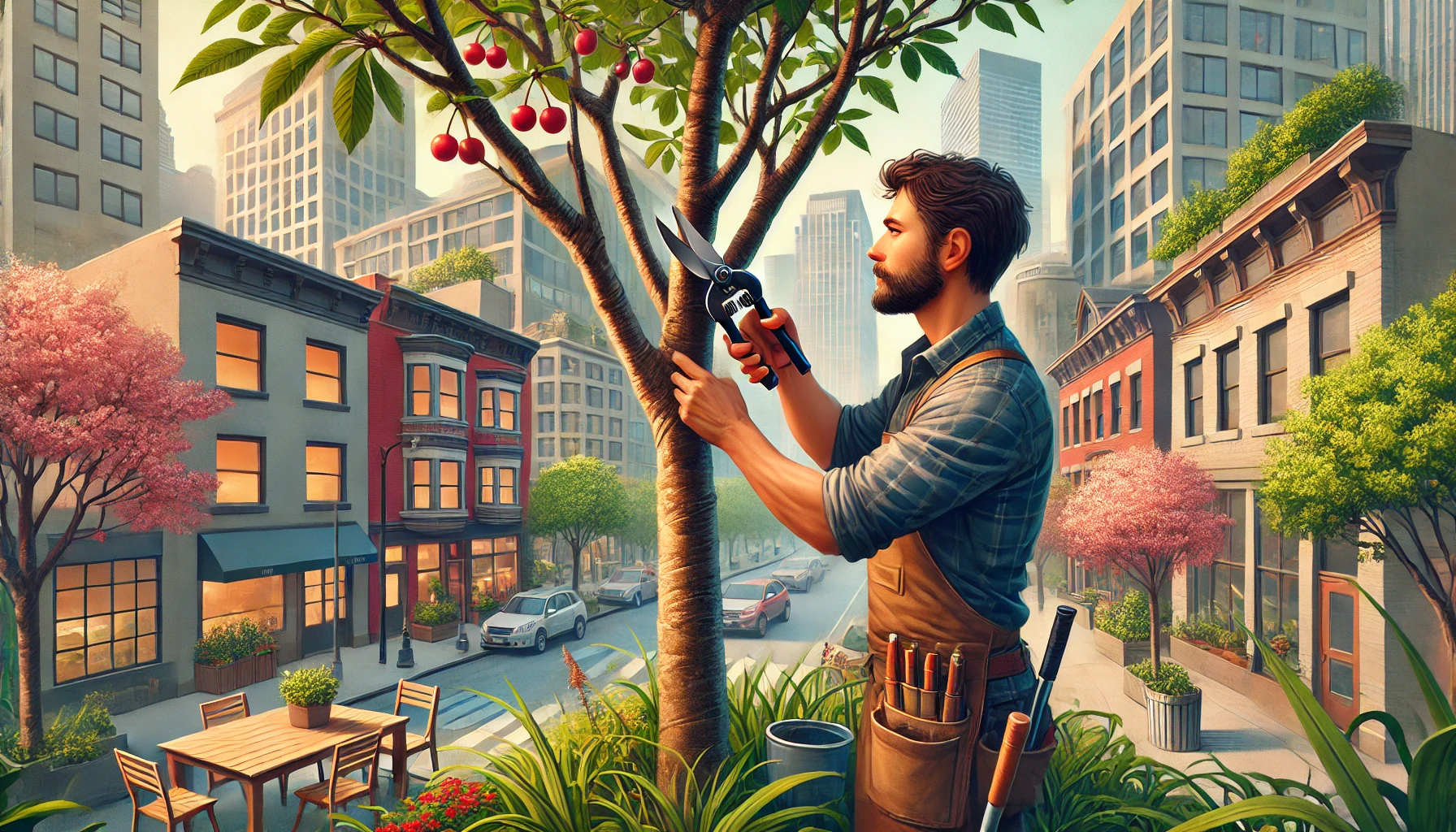
8.Pest Control 
With the right care, your cherry tree can flourish in an urban setting, providing you with beauty, shade, and fresh fruit for years to come!
Protecting Your Cherry Tree from Urban Challenges 
Urban environments can be tough on cherry trees, with pollution, pests, and limited space posing unique challenges. However, with the right care, your cherry tree can thrive even in the city! Here are some key tips to protect it:
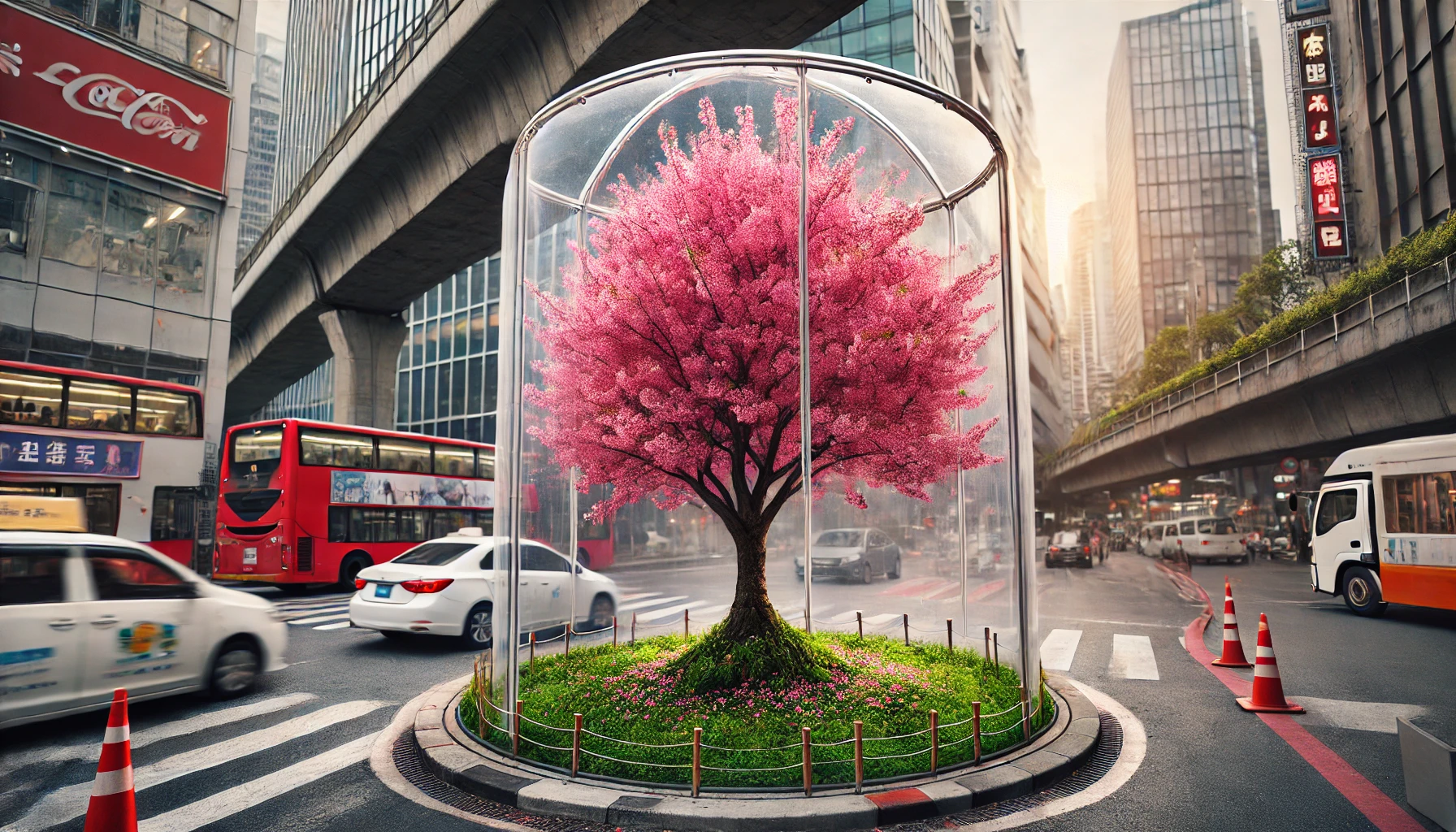
- Shield from Pollution
: Air pollution can stress your tree, affecting its growth and fruit production. Consider planting it in a less polluted area, away from heavy traffic, or use a tree guard to reduce exposure.
- Water Smart
: In cities, the soil can become compacted, limiting water flow to the roots. Regularly water your cherry tree and ensure good drainage to keep roots healthy. A layer of mulch can help retain moisture and keep roots cool.
- Combat Pests
: Urban areas often harbor pests like aphids and beetles. Regularly inspect your tree for signs of infestations and use eco-friendly insecticides or natural predators to control the pests.
- Provide Space
: Urban spaces often have limited room for growth. Make sure your cherry tree has enough space for its roots to expand. Consider raised beds or large pots if you’re planting in small areas.
- Prune Regularly
: Urban environments can be harsh, so regular pruning helps maintain a healthy shape and encourages airflow, reducing the risk of diseases. Trim dead or damaged branches to keep the tree strong.
- Protect from Salt
: City roads can be salted in winter, which can harm your cherry tree. Consider creating a barrier around the base to protect it from salt exposure, especially during the colder months.
Harvesting and Enjoying Your Cherry Tree 

Once your cherry tree reaches its peak, it’s time to harvest and enjoy the fruits of your labor! Here’s how to make the most of your cherry harvest:
1. When to Harvest 
Cherries are ready to pick when they are fully ripe, bright in color, and slightly soft to the touch. They should easily come off the stem with a gentle tug. Taste a few to ensure they’re sweet and flavorful before harvesting.
2. How to Harvest 
Use a gentle hand when picking cherries to avoid damaging the tree or fruit. For a cleaner cut, use pruning shears to snip the stems, leaving a small part of the stem attached to the fruit. Be sure to harvest in the morning when the fruit is coolest to keep it fresh longer.
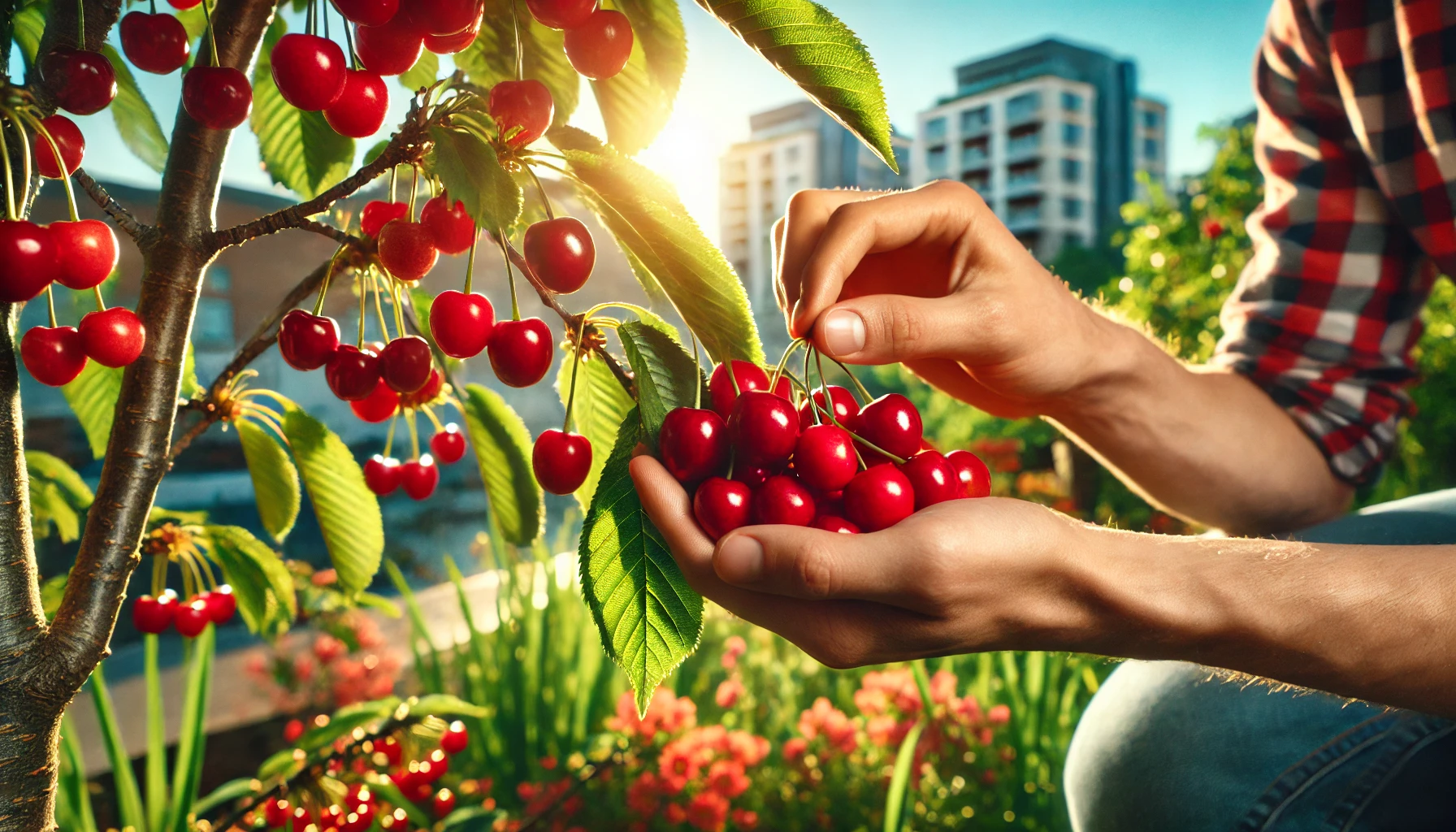
3. Storing Your Cherries 
Fresh cherries are best eaten within a few days of harvesting, but they can be stored in the refrigerator for up to a week. If you want to keep them longer, consider freezing them. Simply wash, pit, and spread them on a baking sheet before freezing, then store in an airtight container.
4. How to Enjoy Cherries 
Cherries are incredibly versatile! Enjoy them fresh, add them to salads, or use them in pies and jams. For a quick treat, toss them in yogurt or drizzle with honey. You can also try your hand at making homemade cherry juice or wine!
5. Caring for Your Tree After Harvest 
After the harvest, prune dead or damaged branches and continue to water your tree, especially during dry spells. This will help your cherry tree stay healthy and strong, preparing it for next season’s blossoms and fruit.
Enjoying your cherry tree’s bounty is a rewarding experience, and with proper care, you’ll be able to enjoy delicious cherries for years to come!
Troubleshooting Common Problems with Cherry Trees in Urban Settings 
Cherry trees in urban environments face unique challenges due to factors like pollution, limited space, and poor soil quality. Here are some common problems and how to address them:
1. Pollution Stress 
Urban air pollution can damage your cherry tree’s leaves and reduce its growth. To combat this, plant your cherry tree in a less trafficked area with better airflow. Regularly wash the leaves to remove dust and pollutants.
2. Soil Compaction 
Urban soils are often compacted, making it hard for roots to spread. If you notice slow growth or wilting, loosen the soil around the base. Adding organic matter can improve soil structure and water retention.
3. Limited Space 
In cities, space is often tight, which can restrict root growth. If your tree is in a small yard, consider a dwarf cherry variety or plant your tree in a larger container with well-draining soil for healthier roots.
4. Pests and Diseases 
Urban environments attract pests like aphids, scale insects, and cherry slugs. Use organic pest control methods, such as neem oil or insecticidal soap, to keep pests at bay. Always inspect your tree for signs of disease, such as black spots or mold.
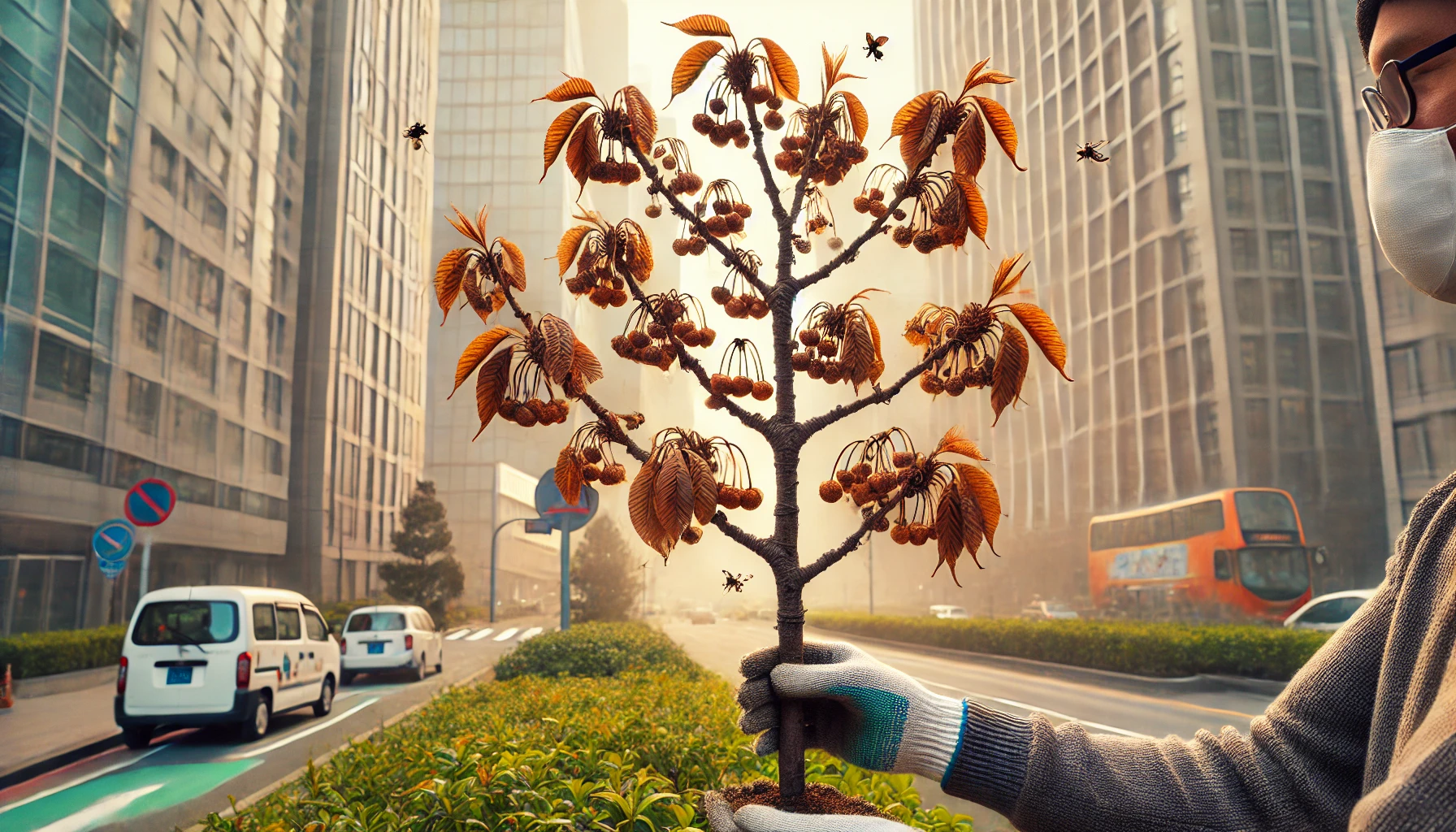
5. Overwatering or Underwatering 
Urban irrigation systems can be inconsistent, leading to cherry tree stress. Ensure your tree receives the right amount of water. The soil should stay moist but not soggy. A deep watering once a week is often best.
6. Poor Pollination 
If your cherry tree isn’t producing fruit, it could be due to poor pollination, especially in urban areas with fewer pollinators. Plant companion plants like lavender or bees-friendly flowers nearby to attract more pollinators.
By addressing these issues, you’ll keep your cherry tree healthy and thriving in an urban environment. Happy gardening!
Conclusion 

Growing cherry trees in urban environments may seem like a challenge, but with the right knowledge and care, it’s an incredibly rewarding experience. By choosing the right variety, selecting the perfect location, and following proper care techniques, you can enjoy beautiful, fruitful trees even in the heart of the city.
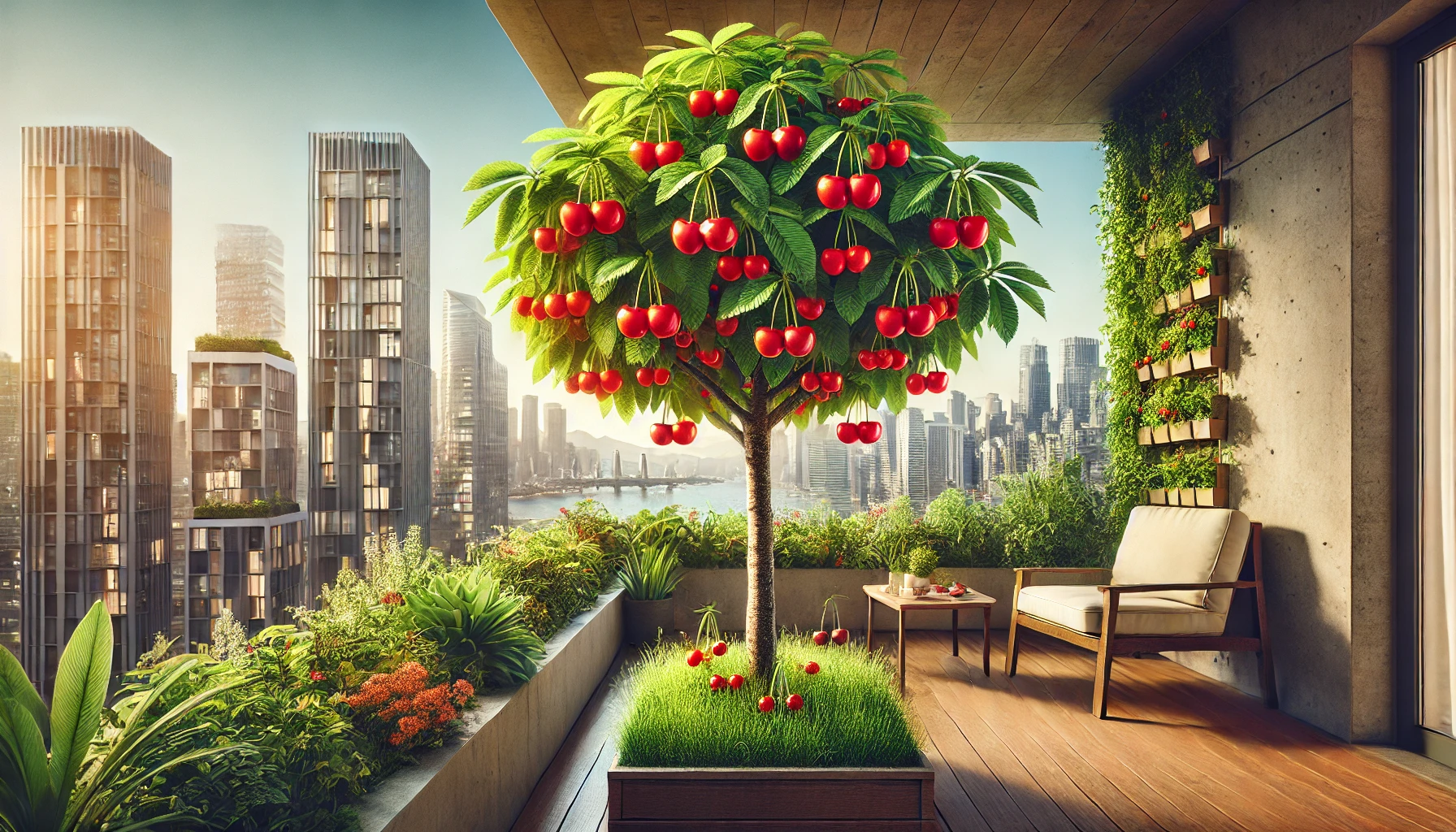
Whether you’re working with a small balcony, a rooftop garden, or a tiny urban yard, growing your own cherries is not only possible—it’s a fulfilling way to add beauty and freshness to your environment. With patience and the right strategies, you’ll be rewarded with delicious cherries, all while contributing to a greener, more sustainable urban space.
So, get started today, and enjoy the journey of nurturing your cherry tree to its fullest potential in your urban garden. Happy growing!
Frequently Asked Questions(FAQ)
Can cherry trees grow in small urban spaces?
Yes! Cherry trees can thrive in small urban spaces, especially if you choose compact or dwarf varieties. These types are perfect for container planting on balconies or patios, as well as small garden plots.
How much sunlight do cherry trees need in urban environments?
Cherry trees require full sunlight (at least 6–8 hours of direct sunlight per day) to grow and produce fruit successfully. Be sure to plant your tree in an area with plenty of sun, even in urban settings, where light might be more limited.
What type of soil is best for cherry trees in urban gardens?
Well-draining soil is essential for cherry trees. A loamy, slightly acidic soil mix with good organic matter is ideal. If you’re planting in containers, use a high-quality potting mix designed for fruit trees to ensure the best growth.
Can cherry trees survive in polluted urban areas?
While cherry trees are sensitive to high levels of air pollution, they can still thrive in urban environments with some care. Planting in areas with less vehicle traffic or using protective barriers can help mitigate pollution damage. Urban gardens with good ventilation and clean air can support healthy cherry trees.
How often should I water my cherry tree in the city?
Watering needs depend on weather conditions, but generally, cherry trees need deep watering at least once a week during dry spells. In containers, ensure the soil stays moist but not waterlogged, and provide drainage to prevent root rot.
Should I prune my cherry tree in an urban environment?
Yes, regular pruning is important to maintain a healthy shape, improve airflow, and remove any dead or diseased branches. Pruning helps the tree grow well in confined spaces and promotes better fruit production.
What are common pests that affect cherry trees in cities?
Cherry trees in urban environments may face pests like aphids, spider mites, and cherry fruit flies. Use organic pest control methods like neem oil, insecticidal soap, or beneficial insects to keep pests in check without harming the environment.
Do I need to pollinate cherry trees in urban areas?
Some cherry tree varieties are self-pollinating, meaning they don’t need another tree for pollination. However, planting a second tree nearby can help improve fruit yield, especially for cross-pollinating varieties.









